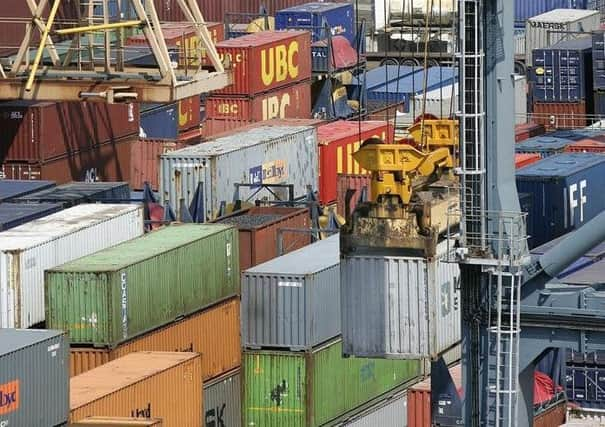Record trade in 2017 for Belfast Harbour


The figures show a record 23.7 million tonnes of goods moved through the port, up 600,000 tonnes (3%) on the previous year.
The harbour, which handles more than 70% of Northern Ireland’s seaborne trade, said that despite the low level of growth in the local economy, significant and strategic investments by the Port and its customers were having a positive impact, as was the relative weakness in sterling on exports.
Advertisement
Hide AdAdvertisement
Hide AdFreight traffic on StenaLine’s Ro-Ro (roll-on/roll-off) services reached a record 514,000 vehicles (up 2%) with external demand for Northern Ireland’s agri-food produce a key driver for the increase. Linked to this, demand for animal feeds and grains rose by 11% to 2.2m tonnes, assisted by improved farm incomes arising from higher milk prices as well as last year’s poor weather conditions. Container traffic also rose by 1.6% to over 125,000 units.
Welcoming former commerical director Joe O’Neill to the CEO’s post following the retirement of long-standing predecessor Roy Adair, chairman David Dobbin, also highlighted some of the challenges which the business is facing in 2018 and the years ahead.
“While Belfast Harbour has seen record levels of overall trade handled in 2017, the picture for individual trade categories is somewhat mixed.
“We are seeing growth in ferry and cruise ship activity, container traffic, agrifood, steel and aggregates, however, we are also seeing ongoing declines in power station coal and liquid fuel as the local natural gas network is extended.
Advertisement
Hide AdAdvertisement
Hide Ad“We would expect a further reduction in power station coal volumes in 2018 with the potential closure of Kilroot.”
Having seen a record year in shipments of wind farm components in 2017, he said the harbour was also expecting activity will reduce with the completion of currently planned offshore wind farms and expected delays before new schemes are approved.
“The good news is that we anticipated these trends and have invested more than £250m in the last 10 years in infrastructure and facilities to support the growth sectors and futureproof the business. “These changes in our business environment are informing our strategic thinking for the coming years and offer us the opportunity to diversify our business, whilst continuing to support the regional economy.”